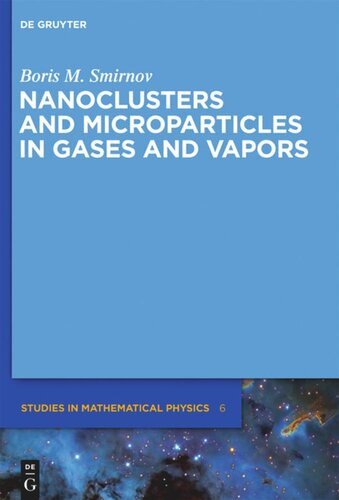

Most ebook files are in PDF format, so you can easily read them using various software such as Foxit Reader or directly on the Google Chrome browser.
Some ebook files are released by publishers in other formats such as .awz, .mobi, .epub, .fb2, etc. You may need to install specific software to read these formats on mobile/PC, such as Calibre.
Please read the tutorial at this link: https://ebookbell.com/faq
We offer FREE conversion to the popular formats you request; however, this may take some time. Therefore, right after payment, please email us, and we will try to provide the service as quickly as possible.
For some exceptional file formats or broken links (if any), please refrain from opening any disputes. Instead, email us first, and we will try to assist within a maximum of 6 hours.
EbookBell Team

0.0
0 reviewsVarious nanoclusters and microparticles are considered in excited and ionized gases, as well as various processes with their participation. The concepts of these processes were developed 50 - 100 years ago mostly for dense media, and basing on these concepts, we analyze these processes in gases in two opposite regimes, so that in the kinetic regime surrounding atoms of a buffer gas do not partake in processesinvolving small particles, and the diffusion regime corresponds to a dense gas where interaction of small particles with a buffer gas subjects to laws of hydrodynamics. For calculation or estimation of the rates of these processes, we are based on the liquid drop model for small particles which was introduced in physics by N. Bohr about 80 years ago for the analysis of properties of atomic nuclei including the nuclear fusion and the hard sphere model (or the model of billiard balls) which was used by J. C. Maxwell 150 years ago and helped to create the kinetic theory of gases.
These models along with the analysis of their accuracy allow one to study various processes, such as transport processes in gases involving small particles, charging of small particles in gases, chemical processes, atom attachment and quenching of excited atomic particles on the surface of a small particle, nucleation processes for small particles including coagulation, coalescence and growth of fractal aggregates, chain aggregates, fractal fibres and aerogels. Each analysis is finished by analytic formulas or simple models which allow us to calculate the rate of a certain real process with a known accuracy or to estimate this, and criteria of validity are given for these expressions obtained. Examples of real objects and processes involving small particles are analyzed.